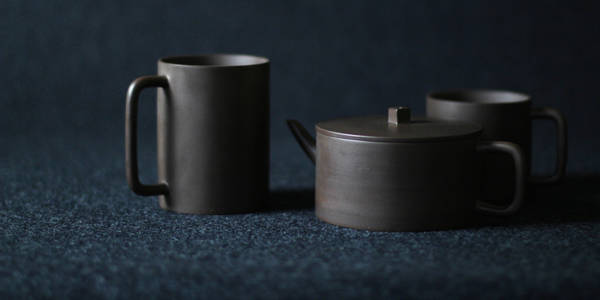profile / alumni / advertising
October 24, 2018
Revisiting Radical Chic: Meet Art Director Mike Diehl
ArtCenter: What are you working on right now?
Mike Diehl (BA Advertising ’73) graphic designer/art director: A host of wonderful projects: a brand identity for a solar-power company in Hawaii, a logo for a nonprofit music organization, plus some prop designs including 1800s medicine bottles for a movie and editions of a newspaper for a TV series that takes place in the late ’60s.
AC: What do you like most about your job?
MD: The range of projects and freedom. As a sole proprietor, I virtually never have to attend a meeting, except occasional one-on-ones with a client or vendor. As humorist Dave Barry noted, “If you had to identify, in one word, the reason why the human race has not achieved, and never will achieve, its full potential, that word would be ‘meetings.’”

I’ve always loved art and music and have designed a lot of materials for the music industry. The union of my two greatest interests has been enormously gratifying.

AC: A project at ArtCenter led to you cross paths with legendary writer Tom Wolfe, can you describe that experience?
MD: During my second year, I was assigned to read a book and design illustrations. I created realistic pencil renderings, including a joint sitting on a silver tray, for “Radical Chic,” a Tom Wolfe article about a gathering at composer Leonard Bernstein’s Park Avenue apartment where some of New York’s liberal elite entertained members of the Black Panther party. I later saw Wolfe speak at USC — I’m guessing it was the spring of ’72. I introduced myself and gave him the drawings. A few months later, I got an extraordinary letter from Mr. Wolfe, in which he also apologized for the delayed response.
AC: What’s the design cliché you’re most tempted to use?
MD: None, I would hope.
AC: What’s the one tool you can’t do without?
MD: A Mac. Duh.
AC: What do you do to detox from media and screens?
MD: Listen to music, read (newspapers, magazines, books), swim laps, play tennis and visit the lovely Brand Art & Music Library, just a few blocks from home.
AC: What book is on your bedside table?
MD: There are too many! There’s a name for my affliction, tsundoku. Among those at arm’s reach, each with a bookmark, are 21 Lessons for the 21st Century, Damn Good Advice (For People with Talent!), Our Towns, On Tyranny, Dark Matter and the Dinosaurs and Enlightenment Now.
AC: Describe a moment in your childhood where you first identified as an artist.
MD: My fourth-grade teacher assigned the class to watch the travel/culture show John Gunther’s High Road to Adventure and write a page on each episode. Except me — I got to draw a mural. By the end of the school year, my murals encircled the classroom. Miss Edelman recognized and nurtured my interest in making images, and by year’s end, I felt quite accomplished.

AC: Who are the most interesting artists/designers working today?
MD: Recently, I’ve been knocked out by the work of painter Peter Zokosky, sculptor Keiko Fukazawa, calligrapher/muralist Peter Greco and graphite artist Laurie Lipton. That said, the artists who interest me most are among my friends, including photographer Ed Freeman, expert calligrapher and bookbinder Douglas Bevans and painter Suong Yangchareon.
Alumni Q&A
Submit the Alumni Q&A questionnaire to share your story. We want to hear about your accomplishments, what you're working on and your advice for future ArtCenter students.
AC: If you could have a superpower, what would it be?
MD: To create more hours in my day.
AC: What’s your most irrational or rational fear?
MD: I can’t think of one; guess that’s a good sign.
AC: Where is your happy place?
MD: When I’m “in the zone.” It can sometimes happen when I’m working, or swimming laps or during a good tennis rally. Or when I’m lost in a book or article, or engaged in a meaningful exchange with my wife, children or good friends.
AC: How would your closest friend describe you?
MD: I’d like to think words like considerate, thoughtful, funny, earnest and creative might come up.
AC: What’s your best piece of advice for an ArtCenter student who’s interested in following your career path?
MD: Find a way to indulge as many of your interests (passions) as possible in your career. To cite my own case, I’ve always loved art and music, and have gotten to design a lot of packaging, advertising and marketing materials for the music industry. The union of my two greatest interests has been enormously gratifying.





